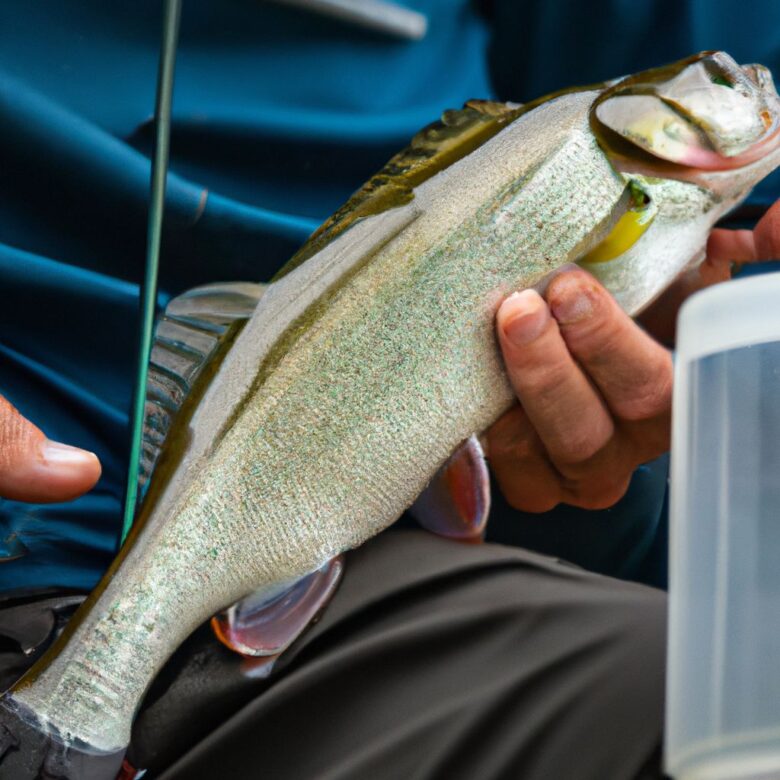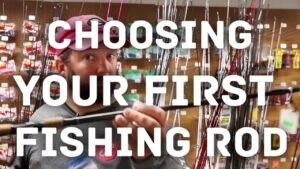High-quality fishing lines offer many advantages – they’re more durable, have better knot strength, and increased sensitivity and control. When selecting the right line for your needs, consider the type of line – monofilament, fluorocarbon or braided.
To ensure optimal performance, inspect and maintain your lines regularly. Avoid exposing them to heat or UV rays as this can weaken the material. Additionally, clean and lubricate reels to prevent line abrasion and reduce friction.
These small steps will help guarantee a successful fishing trip!
The significance of high-quality fishing lines
High-quality fishing lines are a must for a successful angling experience! They’re essential for hooking and reeling in fish, plus they help you be safe and efficient.
- 1. These lines are super strong and durable. They won’t snap easily, even when pressured by big fish.
- 2. They give you better accuracy when casting. Their smooth texture and low memory make it easier to cast precisely.
- 3. Also, they have great knot strength. That means your bait or lure will stay secure – even when facing strong currents or aggressive fish.
Plus, investing in quality fishing lines can save you money in the long run! They might cost more upfront, but they last longer than cheaper ones.
Pro Tip: Check and maintain your line often, to avoid any issues while you’re out on the water.
Choosing a fishing line is like picking a partner – you need strength, reliability, and flexibility – but you don’t get a free trial!
Factors to consider when choosing a high-quality fishing line
Selecting a top-notch fishing line is essential for any angling task. It can make a huge difference to your capacity to catch fish and your pleasure of the activity. There are a few points to take into account when choosing a fishing line.
- Strength: An essential factor is the strength of the line. A durable and robust line will make sure it can bear the weight and power of bigger fish, decreasing the danger of snapping or breakage.
- Diameter: The line’s diameter is very important. Heftier lines are commonly stronger and more resistant to wear and tear, making them ideal for tougher fishing conditions. Lighter lines are less visible underwater and offer better casting accuracy.
- Stretch: Stretch refers to how much the line can stretch under strain. Low-stretch lines offer better sensitivity and better hooksets, while high-stretch lines can absorb sudden shocks and lessen breakage.
- Material: The material employed in producing a fishing line is another key factor. Various materials have their own strengths, longevity, and resistance to abrasions. Popular materials include monofilament, fluorocarbon, and braided lines, each with own merits and demerits.
Take into account extra elements such as visibility versus various water conditions, sinking or floating capability depending on your favored technique, and knot strength for secure connections between lure or bait.
Pro Tip: Before deciding on a high-quality line that fits your needs, always check the recommended pound test (line strength) for your target species and fishing conditions. Using premium fishing lines will not only improve your chances of catching a big fish but also decrease your chances of becoming the laughingstock of the fishing community due to embarrassing line breakages.
Benefits of using high-quality fishing lines
High-quality fishing lines can give anglers plenty of benefits. These lines are specially crafted to be robust, resilient, and tough against wear. For any fishing fan, they are an absolute must-have!
- Their strength and endurance mean that these lines don’t break easily, even when under pressure. This lets fishers reel in bigger, tougher catches with ease.
- These top-notch lines also offer great sensitivity. This helps anglers detect even the slightest nibble or movement on the line, increasing their chances of catching fish.
- Additionally, premium fishing lines boast superior abrasion resistance. This means that damage from rubbing against rocks, debris, or sharp edges underwater is minimized. This increases the lines’ lifespan and reliability.
Moreover, premium fishing lines have special features that set them apart from regular lines. For instance, some of them have low memory characteristics that stop tangling and allow for smooth casts.
To get the most out of using high-quality fishing lines, follow these tips:
- Check the line regularly for signs of wear or damage – like fraying or weakened areas – and replace it if needed.
- Make sure the line is spooled onto the reel correctly to avoid tangles and twists.
- Pick a line with an appropriate pound-test rating depending on the type of fish you’re aiming to catch.
By taking these steps and using high-quality fishing lines, anglers can make their fishing trips more successful. Be it for big game fish or just a casual day at the lake, having reliable and hard-wearing fishing lines can make all the difference.
Top brands and types of high-quality fishing lines
For a successful fishing experience, high-quality fishing lines are a must! They have strength, flexibility, and durability. Let’s explore the top brands and types of these reliable lines.
| Brand | Type | Features |
| 1. Shimano | Monofilament | Low memory, high abrasion resistance |
| 2. PowerPro | Braided | Incredibly strong, sensitive, and thin |
| 3. Berkley | Fluorocarbon | Virtually invisible underwater, low stretch for better sensitivity |
The big names in the industry provide excellent types of fishing lines for various fishing methods and environments. Lesser-known yet great options include Stren Superline (for long casting distance) and SpiderWire Stealth (for enhanced stealthiness).
Did you know that a high-quality fishing line can increase your catch rate? Research by the Florida Fish and Wildlife Conservation Commission shows that using quality lines increases the chances of succeeding.
Therefore, investing in top-notch fishing lines not only boosts the chances of reeling in big catches, but also makes your angling experience even better. Choose wisely – tangled lines and broken dreams can be avoided with proper care, just like a good corkscrew is necessary for a fine wine.
How to properly maintain and care for high-quality fishing lines
To ensure longevity and optimal performance, it’s essential to properly maintain and care for high-quality fishing lines. By following a few basic steps, you can keep your fishing line in excellent condition for an uninterrupted fishing experience.
- Store in a cool, dry area away from direct sunlight. UV rays can weaken the line over time, so keep it dark.
- Clean with mild soap and warm water after each use. Gently wipe with a soft cloth or sponge and let it air dry completely before storing.
- Inspect for any signs of wear or damage before each fishing trip. Look for nicks, frays, or abrasions along the length of the line. Replace immediately if any damage is found.
- Be cautious with sharp objects that could cause cuts or punctures. Even minor damage can reduce the line’s strength.
- Replace regularly, at least once a year or when noticeable degradation occurs.
- Refer to manufacturer guidelines for the best care practices for your specific fishing line.
Ancient civilizations used primitive versions of fishing lines made from animal intestines or plant fibers. As time passed, materials like silk and horsehair were used for increased strength and durability. The invention of synthetic fibers in the 20th century revolutionized fishing lines. Now, advanced technologies further improve fishing lines, providing superior strength, sensitivity, and durability. With proper care, these modern fishing lines can reach their full potential.
Testimonials and success stories from experienced anglers
Experienced anglers vouch for the superiority of high-quality fishing lines. Smoother, longer casts and exceptional strength and durability increases the chances of catching fish. These lines offer superior sensitivity, enabling anglers to detect subtle movements and nibbles. Cost-efficient in the long run, they also preserve aquatic ecosystems.
Sport Fishing Magazine warns that using low-quality or worn-out lines decreases success rates due to decreased tensile strength and increased visibility. Investing in high-quality lines is essential for a successful angling experience.
Conclusion
The importance of high-quality fishing lines cannot be overstated. They are essential for successful fishing trips. Investing in top-notch fishing lines will not only increase your chances of catching fish, but also make your fishing experience better.
Gear quality is vital for fishing. Fishing lines are no exception. High-quality lines are designed with strength and durability in mind. So, you can tackle bigger fish without fear of line breakage. With these lines, you can confidently cast your bait and reel in even the biggest fish without worries.
Moreover, high-quality fishing lines provide superior sensitivity. You can detect even the slightest nibbles or bites. This heightened sense of sensitivity can make the difference between a successful catch and a missed one.
To make the most of your fishing experience, here are a few tips:
- Go for braided lines with great strength-to-diameter ratios. These lines are thinner but stronger than traditional monofilament lines, giving you extended casting distance and increased knot strength.
- Pick up fluorocarbon lines for their amazing underwater invisibility. Fluorocarbon lines have a refractive index similar to water, making them unnoticeable to fish. This hidden characteristic will give you an advantage when targeting difficult fish species.
Lastly, remember to match your fishing line with the type of fish and technique. Different species require different line strengths and features. For instance, if you plan on catching big game fish like marlin or tuna, use heavy-duty braided lines that can stand their strong strikes.





